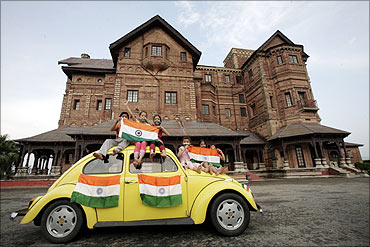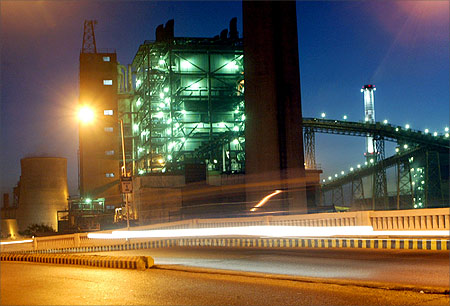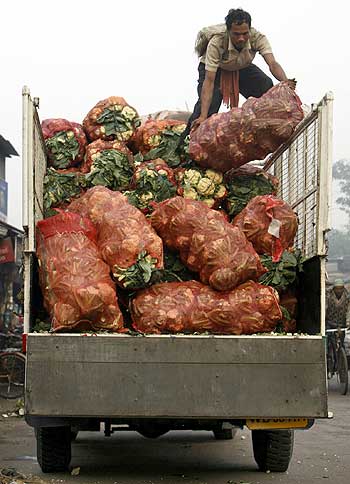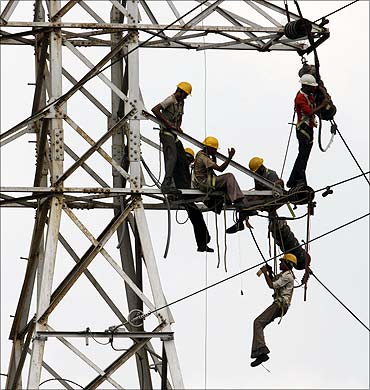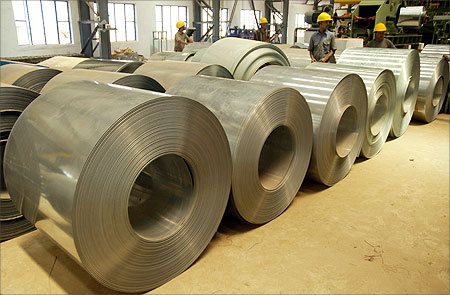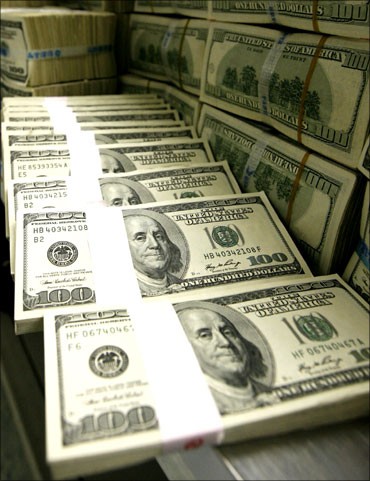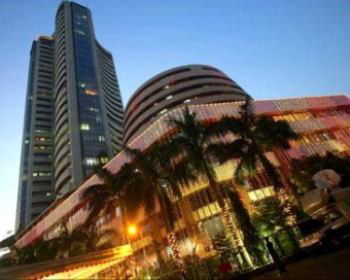 | « Back to article | Print this article |
2 basic errors that could CRIPPLE India's growth
If either failure of comprehension stays uncorrected, 2012 will be a singularly disastrous year, says Mihir S Sharma.
India's economy is in big trouble mainly because its best economic minds are making two basic mistakes.
Both are caused by being too wedded to textbook predictions, rather than looking at the data or at the essentials of the theory that gave rise to the predictions.
If either failure of comprehension stays uncorrected, 2012 will be a singularly disastrous year.
Their first error is about the nature of expected inflation, and how monetary policy should respond to cost-push inflation.
Click NEXT to read on . . .
2 basic errors that could CRIPPLE India's growth
Throughout the world, central bankers understand that this is a nightmare scenario, and that they need to ensure growth is restored, without allowing runaway inflation.
Yet few central banks worldwide have been as hawkish as India's, which has repeatedly indicated that it will not cut rates until it is certain that inflationary expectations are low enough.
This was straight out of the playbook, they thought: a period of high inflation, even if caused by the increase in costs of one or two commodities, could feed back into expectations of higher inflation in the future, creating a wage-price spiral that they have to control.
Except there was little enough for them to go on to reach this conclusion. India's data on expectations of inflation are sadly incomplete; we have no equivalent of the US' 'breakeven rate', for example, which calculates expected inflation based on the difference in yield between regular and inflation-protected government debt.
Click NEXT to read on . . .
2 basic errors that could CRIPPLE India's growth
Surveys, too, are thin on the ground. So hardline monetarists choose to assume people in developing economies imagine the nature of future inflation based on past increases in overall prices.
This is a big step away from the rational-expectations hypothesis we all -- but particularly monetarists -- are supposed to love.
Apparently the iron assumption of rationality about prices should only be suspended for poorer market participants -- and only when it is necessary to get the results the monetarists want.
Either way, we are supposed to believe that people cannot understand that food prices were earlier rising, driving an increase in the cost of living, and that now they are slowing; and that high-protein foods will continue to increase in price, if less sharply.
Click NEXT to read on . . .
2 basic errors that could CRIPPLE India's growth
The baseline assumption of the Reserve Bank of India (RBI) and its hardline intellectual backers depends on consumer confusion of a sort that none of us would actually show.
If, indeed, people were so completely unable to detect movements in relative prices and needed well-educated bureaucrats to save them from themselves, it would be great argument in favour of central planning. Somehow I don't think that's what Mint Road would like us to believe.
Yet the RBI persists in assuming away rational expectations, and thus in ultra-hawkish policy.
Meanwhile, such policy actually confuses market participants about price signals. It is trivial to show, mathematically, how contractionary monetary policy -- targeting a given growth rate in a badly-designed price index, and in response to structural changes in costs -- distorts relative prices.
Click NEXT to read on . . .
2 basic errors that could CRIPPLE India's growth
It seems some price distortions are absolutely OK, even if they hurt the poor, hurt growth, and muddy market signals. The greatest danger to relative price accuracy is the RBI itself.
The truth is that a central bank's remit, in the words of Paul Volcker, is indeed to manage expectations -- but the best way to manage expectations is to make them more rational and informed, through clear announcements of what the causes of inflation are, and what the RBI can, cannot, should not, and will not do.
So far all the RBI's increased transparency has shown is that its governor and senior advisors are happy to ignore the advice of its Technical Advisory Panel -- people who have presumably not just read the textbooks, but done their homework, too.
The first basic economic error, therefore, is the RBI's. Without a correction in interest rates, one that allows for sensible expectations to form and for adequate investment to be made, no recovery will be possible.
Click NEXT to read on . . .
2 basic errors that could CRIPPLE India's growth
The second basic economic error seems to think the government need only do nothing to spark recovery. Shockingly, that seems to be how some of the most senior economic thinkers in UPA-II think.
At last week's Business Standard Lecture, the chairman of the Prime Minister's Economic Advisory Council, C Rangarajan, told a stunned audience that 'we should be growing at 8-9 per cent even under the present policy regime.'
The problem, he said, was not one of fundamentals, but entirely due to a weakened external environment.
This belief, which has been echoed by some others within the policy-making establishment, fundamentally misunderstands, well, fundamentals.
Click NEXT to read on . . .
2 basic errors that could CRIPPLE India's growth
It looks at the overall numbers and the headline results of neoclassical growth theory, and imagines that, if India's growth is oscillating around 9 per cent, then that is its 'steady-state' growth rate.
Nothing could be further from the truth if one, again, goes beyond the final result and actually looks at the equations.
In its essentials, a country's growth rate depends on three things: an increase in capital, whether physical capital or the skills of human beings; an increase in labour force participation; or an increase in productivity, usually assumed to happen thanks to steady technical progress.
Let's look at each of these in turn. Labour force participation may not be growing at a rate sufficient to increase per-capita income, as poorer women in particular are dropping out.
Click NEXT to read on . . .
2 basic errors that could CRIPPLE India's growth
Capital investment, of course, has crashed, and given India's savings rate and the investment it attracts, might never have been enough to get us to eight or nine per cent anyway -- at least, without massive misallocation of capital, the effects of which are beginning to tell on China.
Technical progress is, at best, shared with the rest of the world, and skill-biased technical change is less potent in a low-skills economy. That means India cannot beat the world growth rate by a huge margin through technical progress alone.
Which leaves other increases in productivity as the engine of growth. But those are precisely the increases that don't have a 'steady state'.
They come from continued action -- which means, in India's case, continual reform. Reform that allows more workers to find the right jobs.
Click NEXT to read on . . .
2 basic errors that could CRIPPLE India's growth
Reform that allows more entrepreneurs to create useful products. Reform that reduces costs for companies.
UPA-I complacently rode a burst of such productivity-enhancing reform from the early 2000s. Without another such burst, we will not be anywhere near double-digit growth, but oscillate around 6.5 per cent.
But UPA-II has made an elementary error of economics, and doesn't even believe reform is necessary.
The macro experts running India have lost touch with the most basic microeconomic essentials. Unless they go beyond their by-the-textbook approach, 2012 will be one of the worst years of the Manmohan decades.

